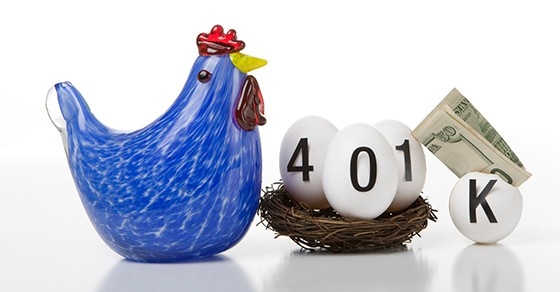
- Home
Why Choose SD
Services

- Services
Tax Services
Tax Planning
Attestation Services
Accounting Services
Business Services
Consultation
Industries We Serve
- Tax Center
Resources
Get In Touch

Experience The SD Difference
Why you Should Boost your 401(k) Contribution Rate Right Now

One important step to both reducing taxes and saving for retirement is to contribute to a tax-advantaged retirement plan. If your employer offers a 401(k) plan, contributing to that is likely your best first step.
If you’re not already contributing the maximum allowed, consider increasing your contribution rate between now and year end. Because of tax-deferred compounding (tax-free in the case of Roth accounts), boosting contributions sooner rather than later can have a significant impact on the size of your nest egg at retirement.
Traditional 401(k)
A traditional 401(k) offers many benefits:
- Contributions are pretax, reducing your modified adjusted gross income (MAGI), which can also help you reduce or avoid exposure to the 3.8% net investment income tax.
- Plan assets can grow tax-deferred — meaning you pay no income tax until you take distributions.
- Your employer may match some or all of your contributions pretax.
For 2017, you can contribute up to $18,000. So if your current contribution rate will leave you short of the limit, try to increase your contribution rate through the end of the year to get as close to that limit as you can afford. Keep in mind that your paycheck will be reduced by less than the dollar amount of the contribution, because the contributions are pre-tax so income tax isn’t withheld.
If you’ll be age 50 or older by December 31, you can also make “catch-up” contributions (up to $6,000 for 2017). So if you didn’t contribute much when you were younger, this may allow you to partially make up for lost time. Even if you did make significant contributions before age 50, catch-up contributions can still be beneficial, allowing you to further leverage the power of tax-deferred compounding.
Roth 401(k)
Employers can include a Roth option in their 401(k) plans. If your plan offers this, you can designate some or all of your contribution as Roth contributions. While such contributions don’t reduce your current MAGI, qualified distributions will be tax-free.
Roth 401(k) contributions may be especially beneficial for higher-income earners, because they don’t have the option to contribute to a Roth IRA. On the other hand, if you expect your tax rate to be lower in retirement, you may be better off sticking with traditional 401(k) contributions.
Finally, keep in mind that any employer matches to Roth 401(k) contributions will be pretax and go into your traditional 401(k) account.
How much and which type
Have questions about how much to contribute or the best mix between traditional and Roth contributions? Contact us. We’d be pleased to discuss the tax and retirement-saving considerations with you.
© 2017
Ask a Question
Do you have a question about tax services, attestation, bookkeeping, or our other financial services? Click here to ask one of our financial experts.
Newsletter
Keep up with the latest developments in taxes, finance, and all things SD Associates, P.C. by signing up for our newsletter.
Experience The SD Difference
Why Our Clients Love Us
Accountants Serving Philadelphia, Bucks County, Montgomery County, & Surrounding Counties

Looking For More From Your CPA?
When you partner with SD Associates, P.C., you’re working with a top-notch team of knowledgeable tax professionals. With over 3 decades of experience, we strive to provide our clients with the highest level of service.
Full-service CPA Firm
Over 35 Years in Business
Always Available for Phone Calls
Accessible Via Email or Phone
Wide Client Base
Experienced CPAs with Advanced Degrees


Service Areas
Communities We Serve
Navigation
Services
Accolades
